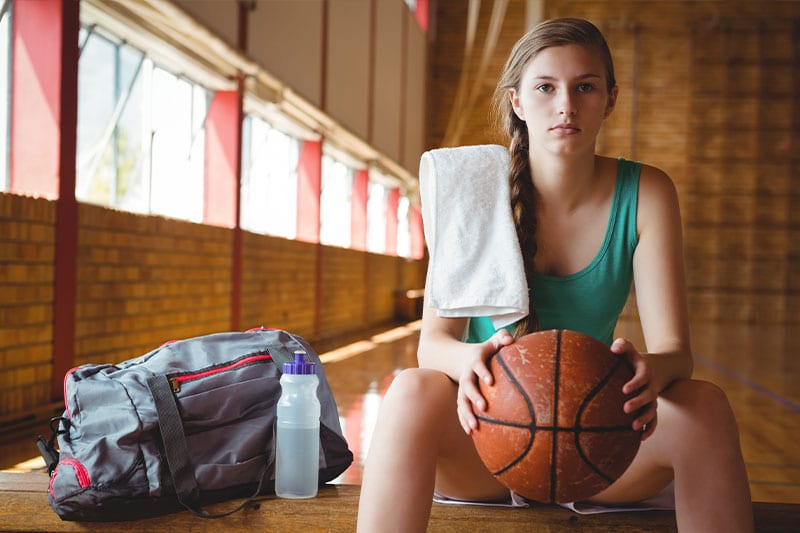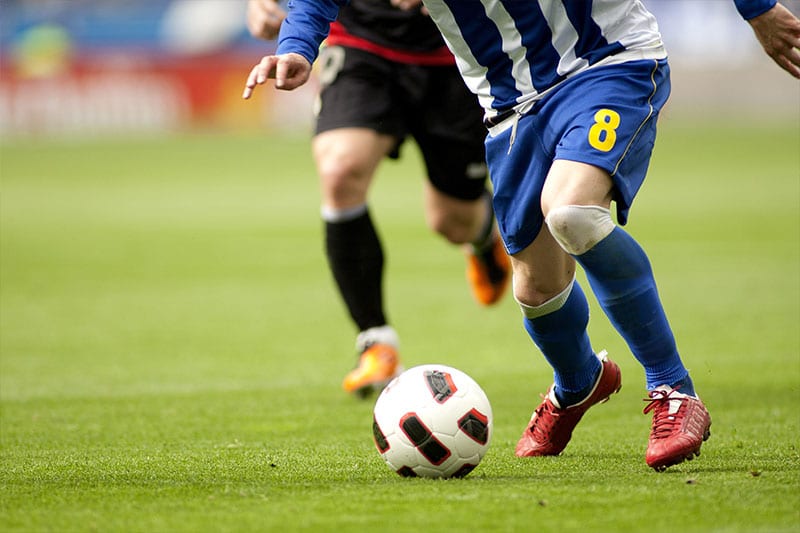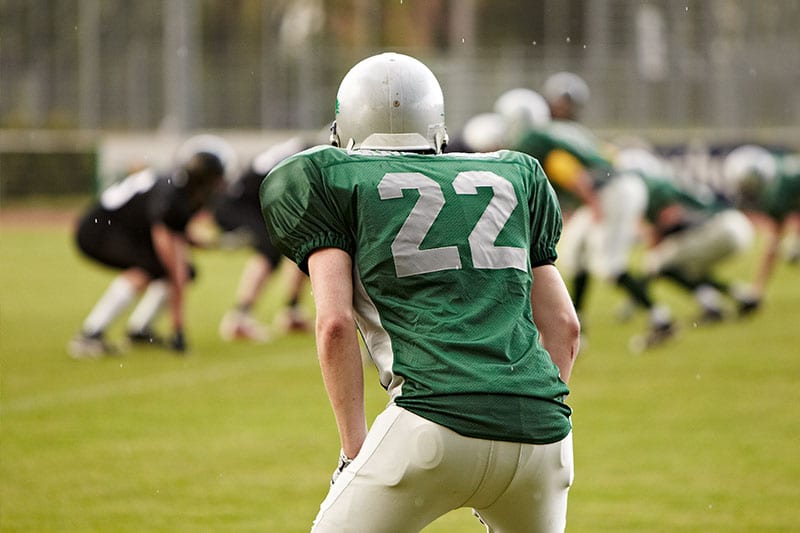At OKC Orthopedics, we want to help athletes stay healthy and perform their best. ACL tears are common and serious injuries in sports. Here’s how you can protect yourself and keep playing the sports you love.
Key Takeaways
- ACL injuries often occur during sudden stops, direction changes, or awkward landings
- Prevention is important, as ACL tears can sideline athletes for 6-9 months
- Strengthening exercises, proper technique, and balance training help prevent injuries
- Female athletes have higher risk and may need to focus on specific exercises
- Consistent practice of preventive measures is key to long-term knee health
Understanding ACL Injuries
Your ACL, or anterior cruciate ligament, is important for knee stability. It’s like a strong rope connecting your thighbone to your shinbone. ACL injuries often happen when you stop suddenly, change direction quickly, or land awkwardly from a jump. Imagine you’re playing basketball and suddenly pivot to avoid an opponent – that’s when your ACL is at risk.
These injuries are common in sports like soccer, basketball, and football. Girls are more likely to get an ACL injury than boys. But don’t worry, we’ll cover some special tips for you later!


Why Prevention Matters
Preventing ACL injuries is super important. If you tear your ACL, you might be out of your sport for 6-9 months. That’s a long time! Plus, even after you heal, you might be more likely to get arthritis in your knee when you’re older. That’s why we at OKC Orthopedics Sports Medicine focus so much on prevention.
The good news is that many ACL injuries can be prevented. By strengthening the right muscles and learning proper movement techniques, you can reduce your risk. It’s like putting on a seatbelt – it doesn’t guarantee you won’t get hurt, but it makes it much less likely.
Key Exercises for ACL Injury Prevention
Here are some exercises that can help protect your ACL. These aren’t boring gym routines – they’re like secret weapons for your knees!
1. Squats and Lunges
Squats and lunges are great for strengthening your legs. They work your quads, hamstrings, and glutes – all important for knee stability. When you do these, make sure your knee doesn’t go past your toes. It’s like you’re sitting back into a chair.
2. Hamstring Curls
Strong hamstrings help protect your ACL. You can do hamstring curls lying on your stomach or standing up. If you’re at the gym, use the hamstring curl machine. At home, try lying on your back and sliding your heels on a smooth floor towards your butt.
3. Balance Training
Good balance helps your body react quickly and safely during sports. Try standing on one leg for 30 seconds. Too easy? Close your eyes or stand on an uneven surface like a pillow. It’s like training to be a surfer, but for your knees!
4. Core Strengthening
A strong core is important for overall stability and can help prevent ACL injuries. Exercises like planks, Russian twists, and bicycle crunches can improve your core strength and enhance your overall athletic performance.
Plyometric Exercises: Jump Training
Plyometric exercises, or jump training, are important for ACL injury prevention. These exercises teach your body how to land safely and absorb shock. Here are some key points:
Key Plyometric Exercises for ACL Prevention
- Box Jumps: Start low, focus on soft landings, gradually increase height
- Jump Squats: Explosive jump at top, land quietly, maintain proper knee alignment
- Lateral Jumps: Practice side-to-side movements, use small distances, keep knees bent
- Single Leg Hops: Build strength in each leg, start short and increase distance
- Proper Landing Technique: Land softly with bent knees, avoid knee knock, practice on different surfaces
Remember, it’s not about how high you can jump, but how softly and controlled you can land. Imagine you’re trying to land on eggshells without breaking them!
Proper Technique: The Key to Safety
Having strong muscles is great, but using them correctly is even more important. Here are some tips for safe movement:
Landing Safely
When you jump and land, your knees should be slightly bent and shouldn’t knock together. Think of landing soft and quiet, like a cat. This helps absorb the shock and protects your ACL.
Cutting and Pivoting
When changing direction quickly, keep your knees bent and your body low. Don’t let your knee collapse inward. Imagine you’re a surfer riding a wave – stay low and balanced.
Deceleration Drills
Practice slowing down and stopping quickly while maintaining proper form. This helps train your body to handle the forces that often lead to ACL injuries during rapid deceleration in sports.

Special Tips for Female Athletes
Female athletes, you’re amazing, but your bodies differ slightly from males in ways that make you more prone to ACL injuries. Understanding these differences and taking preventative steps is key to staying healthy and strong on the field or court.
Factors like wider hips, hormonal changes, and landing techniques all play a role in increasing the risk of ACL injuries in women. Let’s break down these risks and see how they compare:
ACL Injury Risk Factors for Female Athletes
This chart shows how much each factor increases the likelihood of ACL injuries in female athletes. For example, female athletes are **250% more likely** to suffer an ACL injury due to their wider hips, and **600% more likely** due to poor landing mechanics. Understanding and addressing these risk factors through training can reduce injury risk.
To address these factors, focus extra on strengthening your hips and hamstrings. Practice landing with soft, bent knees. It might feel weird at first, but it’ll become natural with practice.
Making Prevention a Habit
Preventing ACL injuries isn’t a one-time thing. It’s like brushing your teeth – you need to do it regularly for it to work. Try to include these exercises in your warm-up routine before practices and games. Even better, do them a few times a week as part of your regular workout.
Remember, consistency is key. It’s better to do a little bit often than a lot once in a while. Think of it as part of your training, just like practicing your sport skills.
Nutrition and Hydration for ACL Health
Proper nutrition and hydration play a crucial role in maintaining ligament health and preventing injuries. Ensure you’re getting enough protein to support muscle and ligament strength, and stay well-hydrated to keep your joints lubricated and flexible.
Getting Professional Help
While these tips are great for everyone, sometimes it’s best to get personalized advice. At OKC Orthopedics, our team of sports medicine specialists can create a custom prevention program just for you. We’ll look at how you move and give you specific exercises to address your needs.

Don’t wait until you’re injured to think about prevention. Whether you’re a weekend warrior or a serious athlete, taking steps to protect your ACL now can keep you in the game for years to come. Remember, strong knees mean more play time!
The Role of Rest and Recovery
Adequate rest and recovery are often overlooked but are crucial in preventing ACL injuries. Overtraining can lead to fatigue, which may increase your risk of injury. Make sure to include rest days in your training schedule and listen to your body when it needs a break.
For more tips on staying healthy and active, check out our blog. And if you ever need help with sports injuries, we’re here for you. Stay safe and have fun out there!

